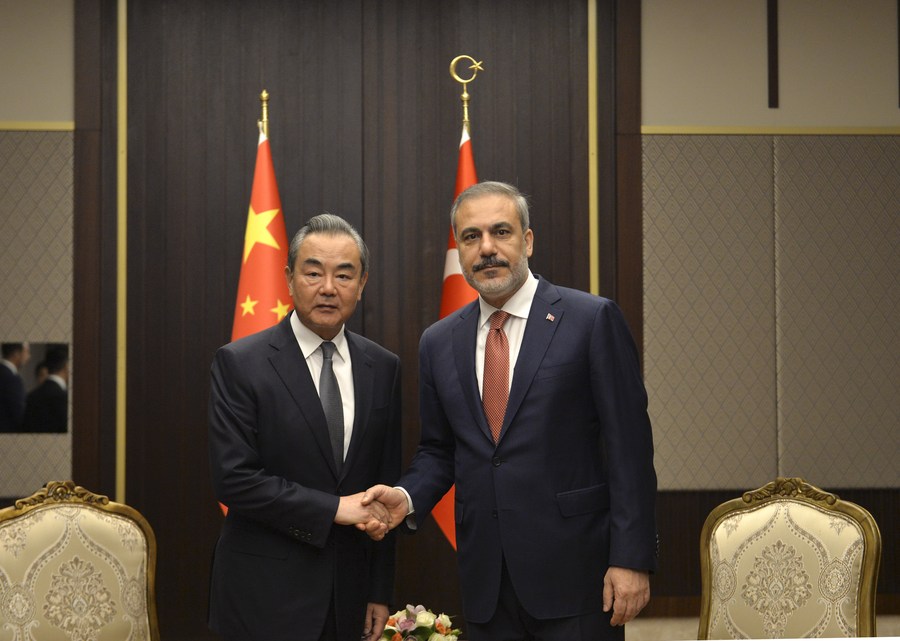Turkey’s new central bank chief rules out more rate hikes in near term
The Turkish central bank’s monetary policy stance is tight enough as things stand and the regulator does not see additional rate hikes as necessary, newly-appointed central bank governor Fatih Karahan said on February 8 at a press briefing held to release the authority’s latest quarterly inflation report. It was Karahan’s first meeting with the media since he was appointed on February 2.
On January 25, the central bank’s monetary policy committee (MPC) announced its latest rate hike, amounting to 250bp. As a result, the policy rate rose to 45%. As recently as June last year, it stood at just 8.5%.
The MPC also assessed that the monetary tightness required to establish a disinflation course had been achieved.
It stated that the current policy rate level would be maintained until there was a significant decline in the underlying trend of monthly inflation.
In the period ahead, the authority is to keep employing macroprudential measures and non-capital controls to strengthen the monetary transmission mechanism.
After Karahan was appointed, the finance industry tagged him as “more hawkish” and lobbied for additional rate hikes. The campaign has not borne fruit.
At the press briefing, Karahan was asked about the designation of him as a “hawkish” type. He seemed none too receptive to descriptions of him in relation to a bird species. Nevertheless, the financial media are sticking to their “hawkish” headlines.
In the new inflation report, the authority has kept its end-2024 official inflation estimate unchanged at 36%, while Karahan said that the central bank sees the official series peaking at 73% in May.
On February 5, the Turkish Statistical Institute (TUIK, or TurkStat) said that Turkey’s consumer price index (CPI) inflation officially stood at 64.86% y/y in January versus 64.77% y/y in December and 38% y/y in June.
TUIK also posted 7% m/m official inflation for January. Turkey’s finance minister, Mehmet Simsek, said in a tweet that TUIK will release significantly lower monthly inflation rates starting from the second half of the year.
Also in his press meeting, Karahan stressed that the central bank is tracking the course of the official monthly inflation indicator and, if some significant deterioration is observed in the monthly figures, the need for additional tightening would be evaluated.
According to Karahan, average official monthly inflation will decline to 1.5% in 4Q23.
The next MPC meeting is scheduled for February 22. As things stand, the rate-setters look set to stick with the 45% benchmark.
Karahan also reiterated that the authority will keep employing macroprudential measures and non-capital controls.
The central bank’s exchange rate regime remains a muddle. Karahan trotted out the longstanding central bank line that it is committed to the floating rate regime. However, the regulator intervenes in the market.
The governor also said that recently the central bank’s reserves have been declining given that Turkey’s FX-protected “KKM” deposits have been shifting into FX.
The authority is paying interest on the KKM accounts and that boosts the liquidity of central bank money in the system. Karahan complained that banks had opted to cut deposit rates thanks to the excess liquidity in question. Additional macroprudential measures and non-capital controls will be used to keep targeting the absorption of the excess liquidity.
Karahan was accompanied by his deputy governors, namely Cevdet Akcay and Hatice Karahan (no relation), in the press meeting. They stressed that the central bank would have a more institutional stance in the Karahan term or terms of office.
According to Akcay, the 36% end-2024 official inflation “target” is ambitious, but they want to be ambitious. So that tends to suggest that they actually see the end-2024 figure at a higher level, but are nevertheless sticking with their previous estimate as the target level.
The global markets are not suggesting any notable turbulence. Turkey’s five-year credit default swaps (CDS) remain above the 300-level, while the yield on the Turkish government’s 10-year eurobonds remains below the 8%-level.
The USD/TRY rate is, meanwhile, still heading north. On September 21, the pair once again broke through the horizontal barrier set at the 27.00-level. The latest record high, registered on February 5, is 30.7049.
Since December 15, the Turkish government has returned to its ‘five/10 kurus (Turkish cents, pronounced as kurush) devaluation per day policy’. As of February 5, the daily tranche was being dug at around the 30.60-level. The annual rise in the USD/TRY pair rose to 62%.
Following the local elections to be held at the end of March, with Turkey’s policy rate at its peak, the course of the USD/TRY pair will be observed.
When the northward pull on the pair ends, the moment will be seen as signalling the beginning of portfolio inflows and the opening of the window for slowly building up lira papers.
Ahead of May, when official inflation will peak, the beginning of rate cuts (currently expected by many analysts in 4Q24) will be discussed.



